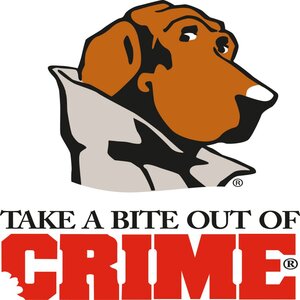Read more about McGruff The Crime Dog at: Wikipedia Official Site: NCPC McGruff the Crime Dog is an anthropomorphic animated bloodhound created by Dancer Fitzgerald Sample advertising executive Jack Keil (who also voiced the character) through the Ad Council and later the National Crime Prevention Council to increase crime awareness and personal safety in the United States. McGruff costumes are used by police outreach efforts, often with children. McGruff was created by Dancer Fitzgerald Sample in 1979 and debuted in 1980 with a series of public service announcement educating citizens on personal security measures, such as locking doors and putting lights on timers, in order to reduce crime. His name was selected as part of a nationwide contest in July 1980. McGruff proved to be a successful campaign with over $100 million in free air time donated in the first year reaching over 50% of adults. McGruff campaigns continued over the years to cover topics such as child abduction, robbery, anti-drug messages, and anti-bullying campaigns. From 1982 to 2012, a number of municipalities participated in the McGruff house program which offered temporary haven to children fearing immediate harm. McGruff has continued to be well recognized, with nine out of ten people recognizing him in a 2021 survey. This is thanks partly to recent campaigns against cyber-bullying, stopping online fakes, and elder-crime. The decades prior to McGruff's creation saw an increase in U.S. public concern over crime. In the 1960s, a number of riots broke out across the U.S. and numerous public figures were assassinated, including President Kennedy, Martin Luther King Jr., and Malcolm X. Accepting the Republican nomination for president, Barry Goldwater positioned crime as one of the biggest issues facing the nation. While Goldwater lost to Lyndon Johnson, the issue of crime did not stop there. In July 1965, President Johnson formed the President's Commission on Law Enforcement and Administration of Justice to "probe ... fully and deeply into the problems of crime in our nation." After two years and $2.5 million, the Commission delivered its report, The Challenge of Crime in a Free Society, in February 1967 which influenced the Crime Control and Safe Streets Act of 1968. The act gave $300 million to local police forces for more personnel and equipment. With the election of Richard Nixon in 1968, the attempts to control rising crime rates shifted from a social approach—the "War on Poverty"—to a tough on crime approach—the "War on Crime". Despite Nixon's attempts, crime continued to rise from 363.5 crimes per 100,000 people in 1970 to 549.5 in 1979. The Carter administration took the focus away from crime and onto nuclear arms control and human rights. During Carter's presidency, crime continued to be a concern with the "kill for thrill murders" of 1979, when two men killed four people over eight days in Western Pennsylvania. No match records for this character. No match records for this character. |

|
 McGruff The Crime Dog
McGruff The Crime Dog